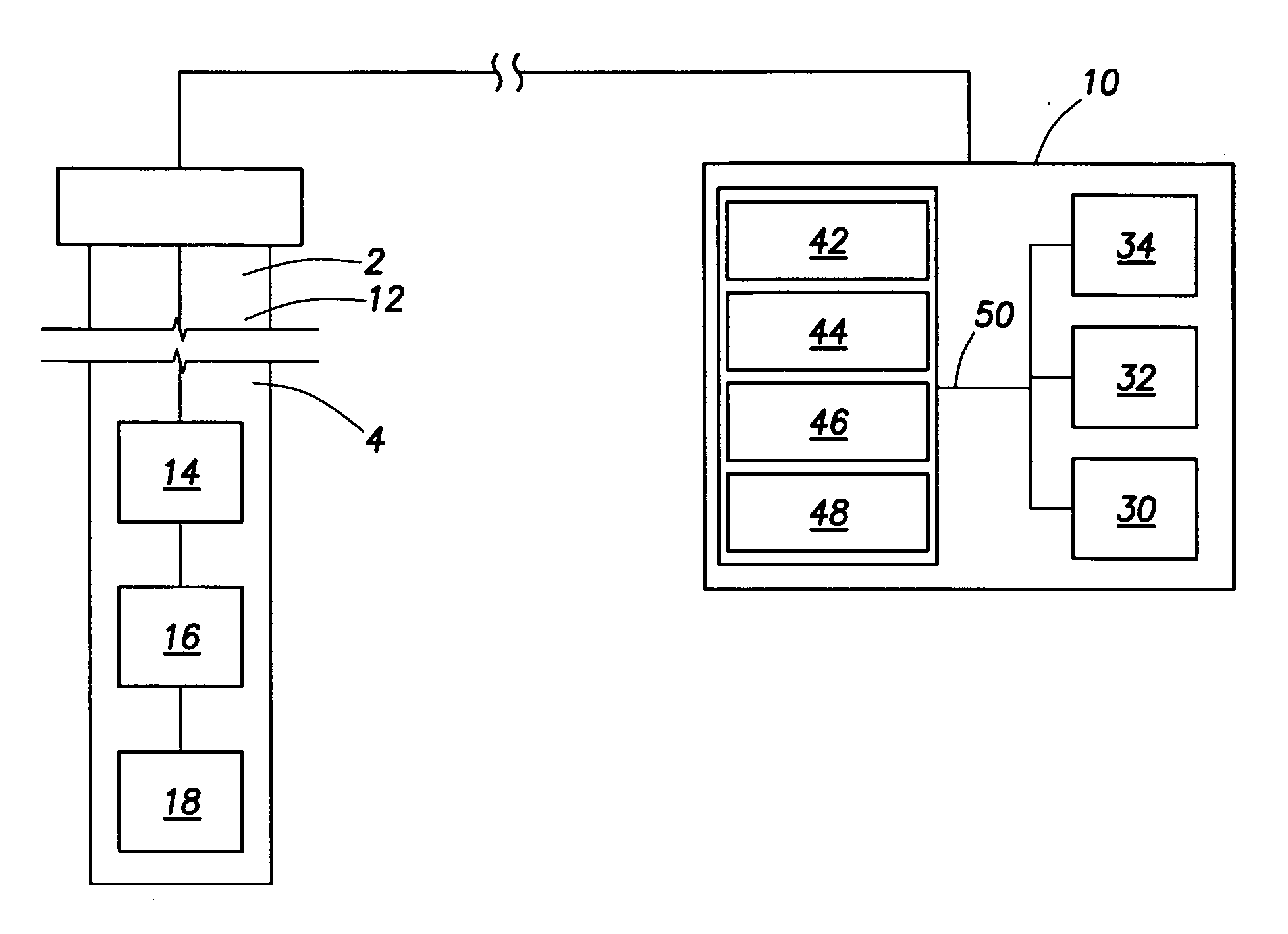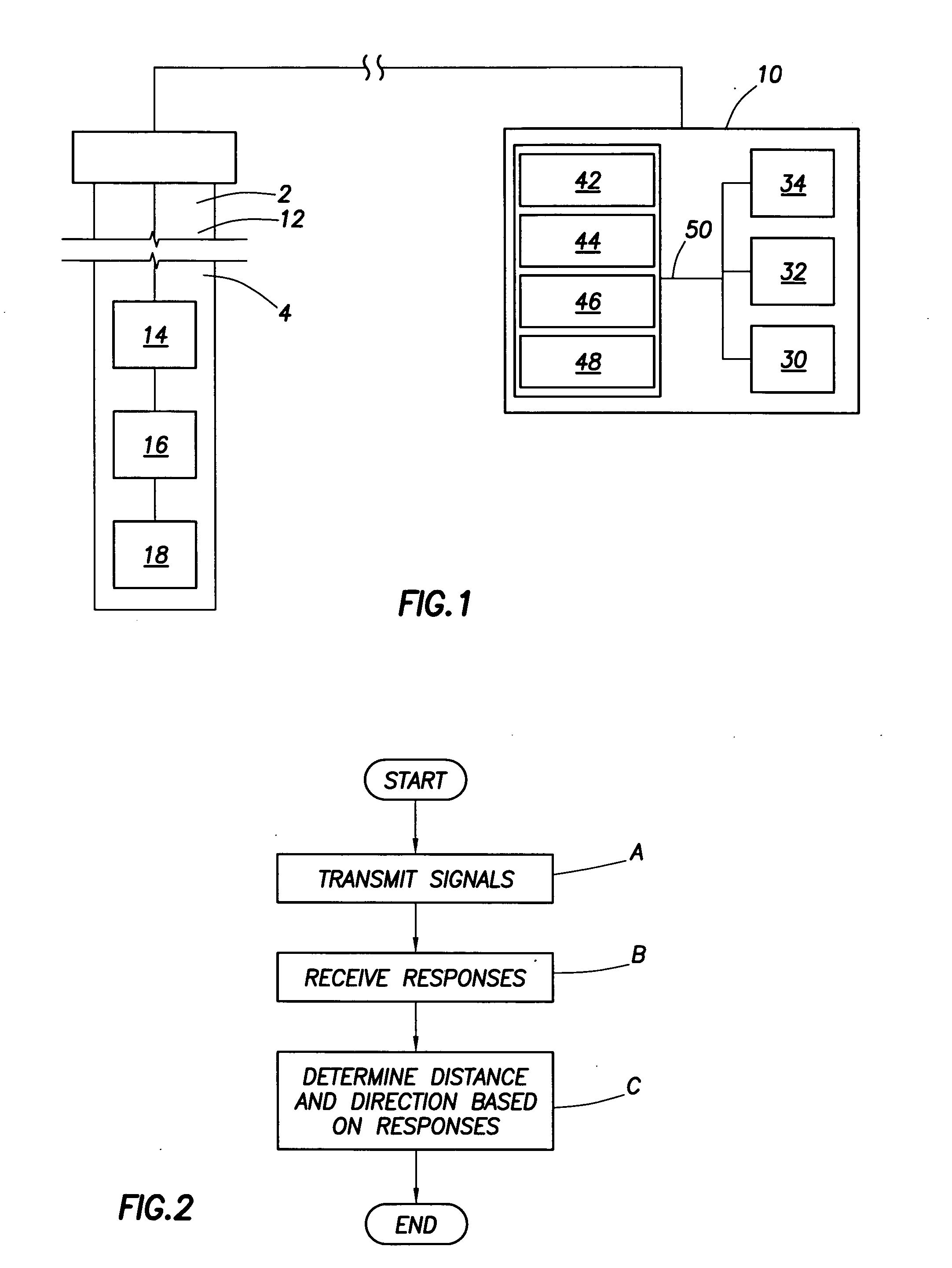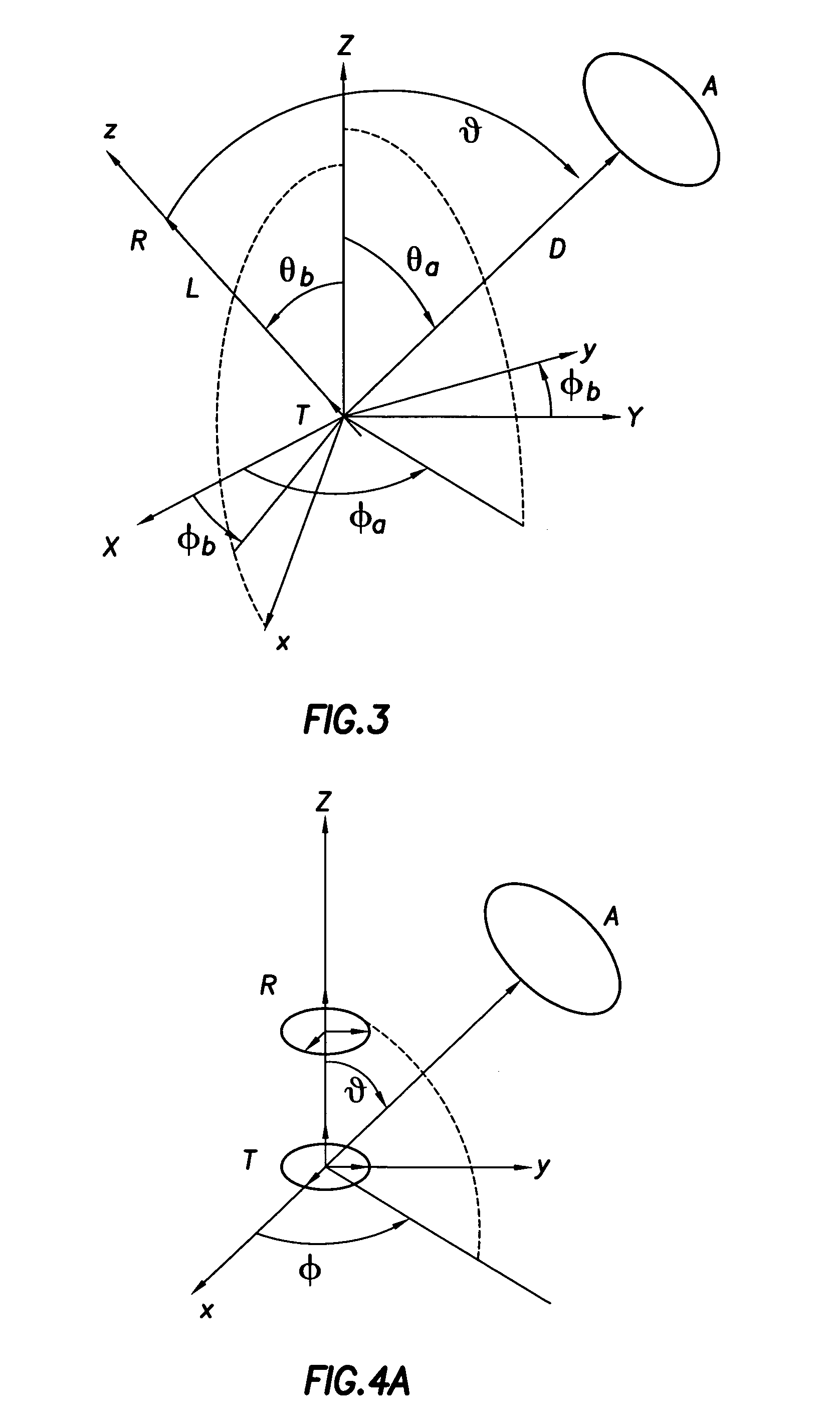Method for imaging subterranean formations
a subterranean formation and imaging technology, applied in seismology for waterlogging, instruments, using reradiation, etc., can solve the problems of inability to determine the location of anomalies with sufficient depth or speed, inability to detect anomalies at a sufficient distance ahead of a bit or bottom hole assembly, and limited depth of investigation facilitated by tools
- Summary
- Abstract
- Description
- Claims
- Application Information
AI Technical Summary
Benefits of technology
Problems solved by technology
Method used
Image
Examples
Embodiment Construction
[0102] Embodiments of the invention relate to a system and method for determining distance and direction to an anomaly in a formation within a wellbore. Both frequency domain excitation and time domain excitation have been used to excite electromagnetic fields for use in anomaly detection. In frequency domain excitation, a device transmits a continuous wave of a fixed or mixed frequency and measures responses at the same band of frequencies. In time domain excitation, a device transmits a square wave signal, triangular wave signal, pulsed signal or pseudo-random binary sequence as a source and measures the broadband earth response. Sudden changes in transmitter current cause signals to appear at a receiver caused by induction currents in the formation. The signals that appear at the receiver are called transient responses because the receiver signals start at a first value and then decay or increase with time to a constant level. The technique disclosed herein implements the time do...
PUM
 Login to View More
Login to View More Abstract
Description
Claims
Application Information
 Login to View More
Login to View More - R&D
- Intellectual Property
- Life Sciences
- Materials
- Tech Scout
- Unparalleled Data Quality
- Higher Quality Content
- 60% Fewer Hallucinations
Browse by: Latest US Patents, China's latest patents, Technical Efficacy Thesaurus, Application Domain, Technology Topic, Popular Technical Reports.
© 2025 PatSnap. All rights reserved.Legal|Privacy policy|Modern Slavery Act Transparency Statement|Sitemap|About US| Contact US: help@patsnap.com



